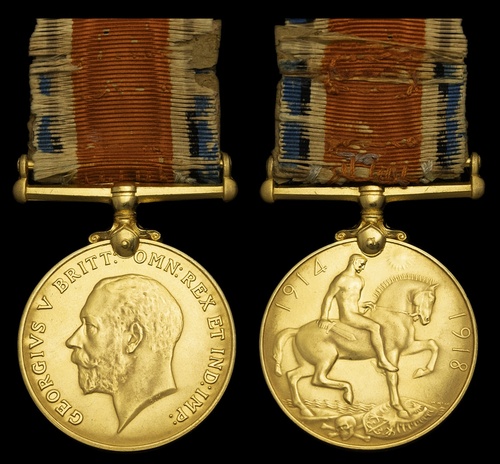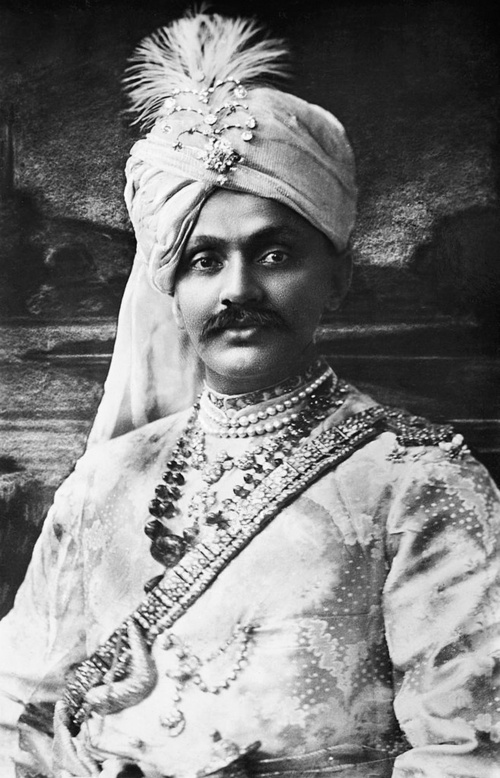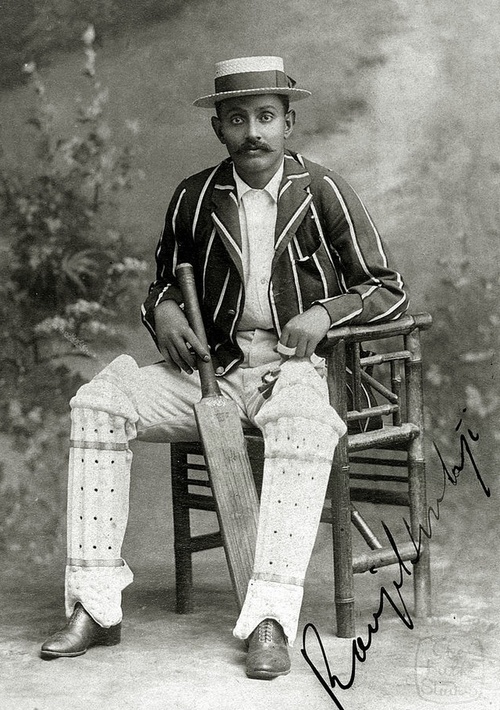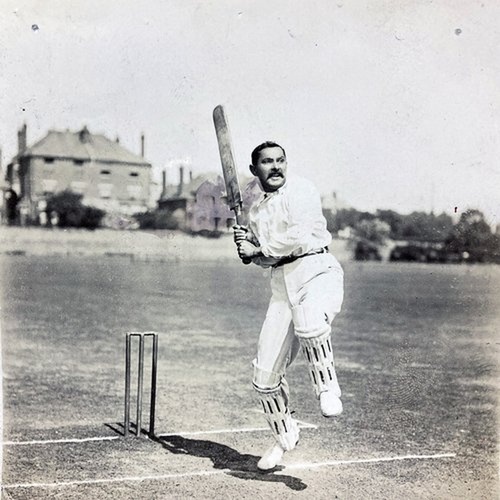Auction: 25001 - Orders, Decorations and Medals
Lot: 42
The British War Medal issued in gold awarded to Lieutenant-Colonel His Highness Sir R. Vibhaji. Maharaja of Navanagar - the legendary cricketer affectionately known as 'Ranji', the first person of colour to play Test Cricket for England in a most successful career of over 300 First Class Matches
British War Medal 1914-20, gold issue (37g) (Lt. Col. H.H. Sir R. Vibhaji. Maharaja of Navanagar.), extremely fine
The cataloguer could happily spill litres of ink on the printing press on the remarkable life of Colonel Kumar Sri Sir Ranjitsinhji Vibhaji II, Jam Sahib Maharaja of Nawanagar, and urges the reader to delve into the numerous online and printed references. Thankfully the Open University have been called upon to offer an abridged version:
'Ranjitsinhji was a cricketer for England and a Prince of Nawanagar State in India, known as 'Ranji' to his cricketing fans. As a child, he was chosen as heir to a distant relative, Vibhaji, the Jam Sahib of Navanagar, but then discarded. He studied at the Rajkumar College in Rajkot and then in 1888, at sixteen, Ranjitsinhji went to Britain. He joined Trinity College, Cambridge, in 1889. It was not until 1893, having played in the meantime for local clubs on 'Parker's Piece', that Ranji gained a place in the Cambridge University cricket team. He was the first Indian to win a cricket Blue. In 1895, Ranji began to play regularly for Sussex. Having faced opposition to his inclusion into the University side, there was now a growing public debate as to whether Ranji should be allowed to play for the England national side. In 1896, Ranji made his debut for England against Australia at Old Trafford. In 1897, Ranjitsinhji produced a book on the evolution of cricket in England called The Jubilee Book of Cricket. In the winter of 1897-8, Ranji toured Australia with the England team.
In 1904, Ranji returned to India as he was no longer playing for England and could not financially support himself in Britain. However, he continued to return to England at regular intervals and play for Sussex. In 1906, the new Jam Sahib of Navanagar, the son of Vibhaji, died and with no other formal heir, Ranjitsinhji assumed the throne. When war broke out in 1914, Ranji helped the imperial effort, by converting his house in Staines into a hospital for wounded soldiers, by donating troops from Navanagar and going to the Western Front himself. Ranji also had a lakeside castle at Ballynahinch, on the west coast of Ireland. In August 1915, he lost his right eye in a shooting accident in Yorkshire, and played his last game for Sussex in 1920. As an Indian Prince, Ranjitsinhji took up many political responsibilities: he represented India twice at the League of Nations, and was a delegate to the Round Table Conference sessions in 1930. He died in 1933 in one of his palaces in Jamnagar.'
A few lines must be mentioned on his cricketing credentials and remarkable records that stand to this day. He played in 307 first class matches and scored a shade under 25,000 runs at 56.37, including 72 centuries and a top score of 285 not out. Some feat in the era of uncovered pitches. That average puts him above names like Wally Hammond, Ricky Ponting and Rahul Dravid of the former players and above all of 'Fab Four' in the current game, these being Joe Root, Virat Kohli, Kane Williamson and Steve Smith. He was also the first person of colour to play for England.
His contribution to the Great War should also not be forgotten, they were clearly considered worthy of the praise of his being issued the British War Medal in gold.
Subject to 20% VAT on Buyer’s Premium. For more information please view Terms and Conditions for Buyers.
Estimate
£5,000 to £7,000
Starting price
£4500











